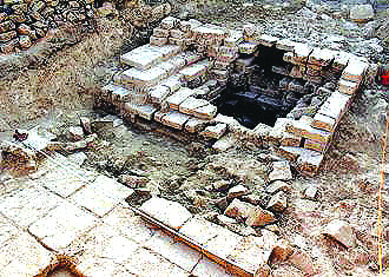November 29 2013

A team of Iranian and Italian archaeologists has unearthed ruins of an ancient temple of the Elymais civilization, a very obscure culture that flourished about 2,000 years ago in what is now Khuzestan province, the Iranian director of the team announced Saturday.
Most parts of the structure have been built with large stones without mortar in the form of a broad platform like those built at Persepolis, Jafar Mehrkian told Cultural Heritage News (CHN).
The structure also includes platforms made of brick, which were usually built in ancient temples, he said.
Vito Messina of the University of Turin and a number of his colleagues were part of the excavation intended to gather information on the Elymais period, about which little is known.
According to the Encyclopedia Britannica, Elymais was an ancient Parthian vassal state usually considered part of the larger district of Susiana.
It incorporated much of the area of the biblical region of Elam, approximately equivalent to the modern region of Khuzestan.
Though the capital city of Susa belonged to Elymais, it seems to have been administered by a Persian satrap. The heart of the kingdom centered near the mountains of Lorestan near modern Behbehan and Izeh, where the local dynasty left rock reliefs and inscriptions in a form of Aramaic.
The dynasty seems to have been founded by Kamnaskires, known from coins dated 81 BCE. The kingdom, though seldom mentioned, survived until its extinction by the Sassanid King Ardashir I (reigned 224–241 CE).
The Iranian-Italian team dug six trenches at the site located near the village of Shami, Mehrkian said.
“A structure entirely built from rectangular bricks was uncovered in the third trench.Ö A member of the team says that it was an altar or a small platform for worship,” he said.
The first trench was dug in a spot that had first been excavated by Polish-born British archaeologist A. Stein about 77 years ago. A life-sized bronze figure of a Parthian prince, which is on display at the National Museum of Iran, is believed to have been unearthed at this site by Stein.
In the sixth trench, the archaeologists discovered a family grave that was used for about one hundred years during the period.
“This tomb represents a style of burial. It is a small rectangular room with a stone structure,” Mehrkian stated.
This season of excavation was carried out based on a five-year agreement between Iran and Italy under the auspices of the Iranian Center for Archaeological Research and the Archaeological Excavations and Research Center of Turin.
